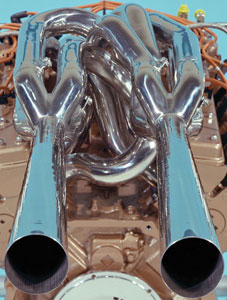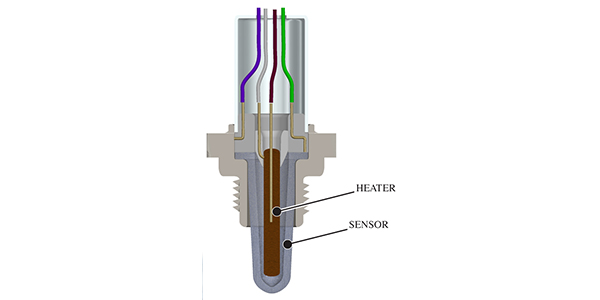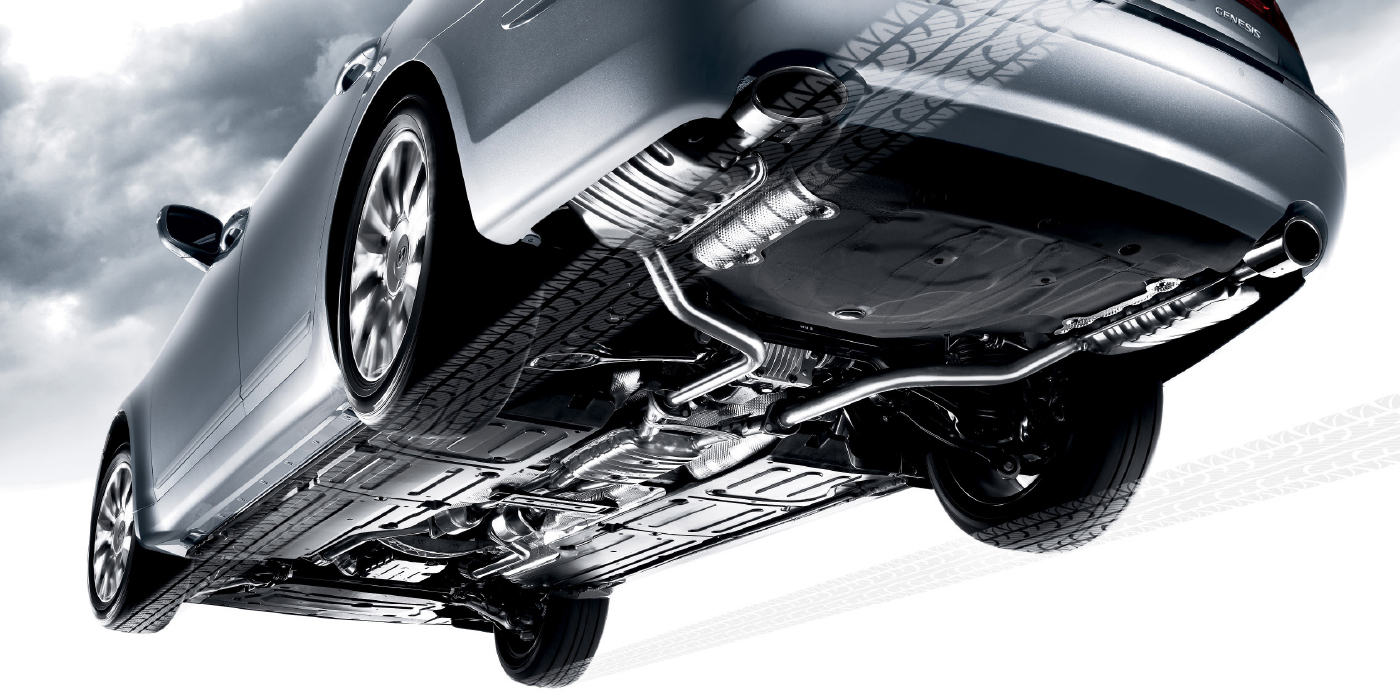 THE EXHAUST EVENT
THE EXHAUST EVENT
To better explain the difference between appearance and function, let’s look at how the intake, compression, power and exhaust strokes really work in a modern Otto cycle engine. The high-speed power output of a naturally aspirated engine depends upon the length or duration in crankshaft degrees of the intake and exhaust valve opening events. Air flow is generally increased by opening the intake and exhaust valves early and closing them later during each combustion cycle.
Increasing valve open duration times also increases valve overlap. When the piston reaches top dead center (TDC) as it travels from the exhaust stroke to the intake stroke, the timing events of the intake and exhaust valves will “overlap,” leaving both valves slightly open at the same time. Exhaust tuning in a naturally aspirated engine depends largely upon how much valve overlap is present at TDC. The longer the intake and exhaust valves remain off their seats, the greater the valve overlap between the intake and exhaust valves and the greater the advantage that can be gained by installing a performance exhaust.
PRESSURE WAVE DYNAMICS
In general, the exhaust valve opens before the piston reaches bottom dead center to release the exhaust gas pressure remaining at the end of the power stroke. When the exhaust valve opens, a high-velocity pressure wave is created in the exhaust port and exhaust manifold as the high-pressure exhaust gases exit the cylinder. The intensity of this pressure wave depends largely on when the exhaust valve opens and how great the gas pressure might be in the cylinder. Consequently, the earlier the exhaust valve opens and the greater the remaining gas pressure in the cylinder, the greater the magnitude of the exiting pressure wave.
Because this exiting pressure wave creates a negative pressure differential in its wake, the exit of the exhaust gas from the cylinder tends to draw the intake charge into the cylinder. In cases of extreme valve overlap, a “scavenge” effect might draw a slight amount of the intake charge into the exhaust stream at low crankshaft speeds.
In instances where the exhaust gas velocity at the exhaust port might prematurely decrease, a slight amount of exhaust gas might “revert” or be drawn back into the cylinder. This “reversion” effect dilutes the intake charge and causes the engine to become inefficient at low crankshaft speeds and helps to create the rough idle characteristics of a performance camshaft.
EXHAUST GAS VELOCITY
For optimum exhaust efficiency, it’s obvious that the velocity of the exhaust gas must remain high as the gas exits the exhaust valve and port. Due to normal turbulence in the gas and the natural cooling of the exhaust gas, the pressure wave rapidly diminishes as it leaves the exhaust port.
Builders of “tuned” exhaust systems attempt to maintain the velocity of the exhaust gas pressure wave by carefully contouring the exhaust port and exhaust manifold “header” pipe to reduce turbulence. The exhaust port and header pipe diameter must be large enough to prevent restriction, but small enough to maintain gas velocity.
Some performance exhaust builders “pair” the header pipes to enable a cylinder on the exhaust stroke to help evacuate exhaust gases from a companion cylinder going onto the intake stroke. Four cylinders might be configured into two pairs. This “paired” pipe configuration would be expressed as 4-2-1 or, four cylinders paired into two pipes that are, in turn, paired into a single exhaust pipe or common “collector.” A four-cylinder engine with four equal-length pipe runners terminating into a common collector would be expressed as a 4-1 configuration. In general, the 4-2-1 configuration might develop more low-speed torque than the 4-1 configuration.
Increasing exhaust manifold pipe diameters above an optimum size causes the exhaust gas pressure wave to rapidly dissipate and lose its effectiveness in helping draw the intake charge into the cylinders. In general, higher engine speeds require slightly larger pipe.
OBD II COMPLIANCE
The words “in general” have been liberally distributed throughout this article simply because seemingly minor exhaust system changes can greatly affect electronic engine management functions. For example, OBD II-compliant vehicles must meet specific exhaust system design parameters to prevent setting false trouble codes.
Engine management systems using an electronic airflow sensor can calculate air/fuel ratio by measuring the exact weight of air flowing into the engine. Speed-density engine management systems, on the other hand, might use a combination of engine speed, throttle opening, barometric pressure, intake manifold vacuum, coolant temperature and intake air temperature values to estimate the weight of intake air flowing into the engine. Installing a performance exhaust might reduce exhaust backpressure enough to cause the PCM to perform an inaccurate calculation of air flowing into the engine. The vehicle might therefore experience driveability and emissions failure issues caused by an inaccurate air flow calculation.




